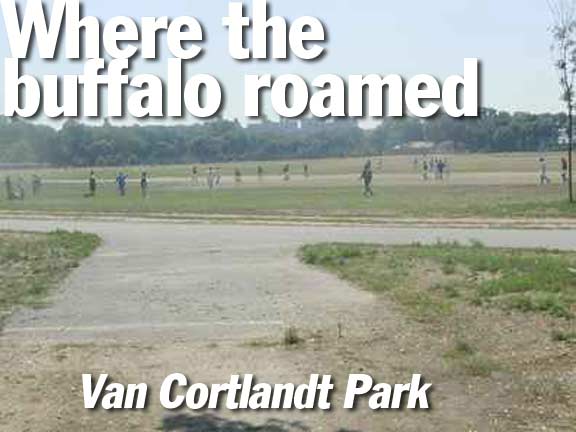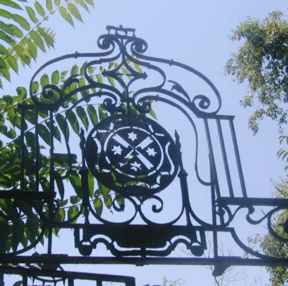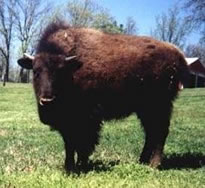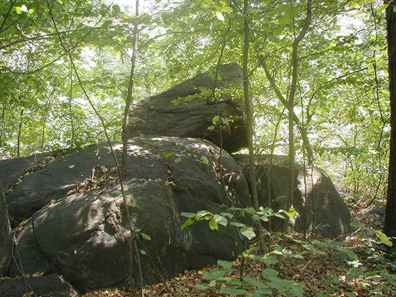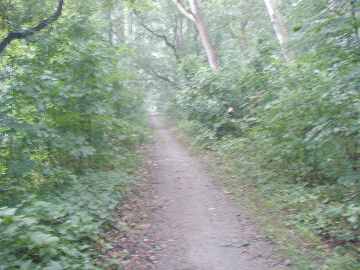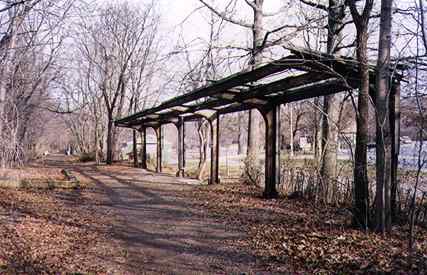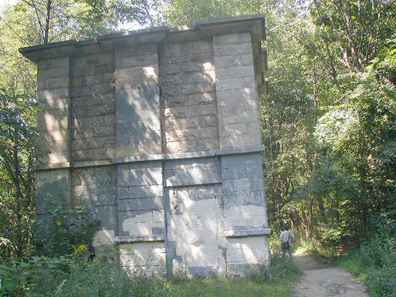What borough has the largest amount of park acreage? Of course…the Bronx! Van Cortlandt Park, and its partner to the east, Pelham Bay Park, account for over 3800 acres of parkland…much of it undeveloped and wild.
The story of Van Cortlandt Park begins in 1699, when future NYC mayor Jacobus Van Cortlandt bought a large tract of the Frederick Philipse holdings in the northern Bronx. The land was originally populated by the local Weekwaeskeek Indians as early as 500-600 years ago.
In 1748, Jacobus’ son, Frederick, built Van Cortlandt Mansion, which still stands today. New York City obtained the land in 1888 and committed much of it to parkland.
Roaming in Van Cortlandt Park east of the Parade Grounds and athletic fields (including NYC’s premier cross country running course) that line the park’s western flank at Broadway and just south of the Henry Hudson Parkway you can find the original burial plot of the Van Cortlandt family, Vault Hill. NYC municipal records were hidden from the Brits here in 1776, and in 1781 George Washington lit campfires here to deceive the British while he marched to Yorktown to face Cornwallis in the decisive battle of the Revolution. By 1917, the region in view of the cemetery was being used as a training ground for World War I troops. Doughboys dug trenches and hiked the surrounding hills.
Just north of Vault Hill is one of NYC’s rare prairie lands, with little bluestem and panic grass that provide habitat for over 130 species of butterflies, either native to NYC or migrating. Speaking of wildlife, don’t be surprised to find foxes, coyotes and wild turkeys roaming around, especially in the park’s wilder northern tracts.
OK, the buffalo. The story goes that as buffalo (properly called bison) were overhunted in western states in the frontier era, putting them in danger of extinction, Dr. William Hornaday of the Bronx Zoo acquired a few buffalo and bred them on the zoo grounds. By 1907 the Bronx herd outstripped the Zoo’s resources, so a few bulls and cows were transferred to Van Cortlandt Park. Later that year, they were sent to Oklahoma, where some of the buffalo are still descended from the Bronx specimens.
Gneiss is nice: Like much of northern Manhattan and Bronx, Van Cortlandt Park is marked by rocky outcroppings made mostly of gneiss, a metamorphic rock with a distinctive banded texture. Streaks of mica can be found in the rocks, as well as quartz.
Van Cortlandt Park’s Northwest Forest contains the park’s older-growth forest, featuring red, white and black oak, hickories, beech, cherry birch, sweetgum, red maple and of course, ubiquitous, incredibly tall and straight tuliptrees. Fauna fans won’t be disappointed either as owls, bats, chipmunks, woodchucks and large gypsy moths, rabbits, raccoons, opossums as well as the aforementioned coyotes are all here and accounted for.
Van Cortlandt Park is cleaved (cloven?) by no fewer than three major roadways, the Henry Hudson Parkway, the Mosholu Parkway and the Major Deegan Expressway, yet is large enough to accommodate them all without losing its distinctive rural character. This view looks east from the Henry Hudson Parkway.
In addition to its natural attractions, Van Cortlandt Park has a couple of ancient pathways and railroads running through it as well. What looks like an unprepossessing park trail beginning at Van Cortlandt Park South near the Mosholu is actually the old pathway of the Old Croton Aqueduct and runs from the New Croton Aqueduct near Yorktown in Westchester County all the way south to High Bridge (with some interruptions).
A short distance from the park’s eastern flank at Broadway is the pathway of the old New York Central Putnam Branch. Though the line has not seen passenger service since 1958 or freight traffic since about 1981, it has been preserved as a busy walkers’ and runners’ trail. It presses far north into Westchester County; the Van Cortlandt Park section is called the John Kieran Nature Trail. Above: what remains of the Van Cortlandt Park station.
Deep in the heart of the park, on the left side of the trail as you travel north, you will see 13 stone pillars. In the 1910s, before the Grand Central Terminal was built, it was decided to test different varieties of stone to see what could stand the weather the best. These pillars were used to make the decision. The second pillar from the left, made of Indiana limestone, contains the stone selected…not for its durability, but because it was cheapest.
3/8/2003

